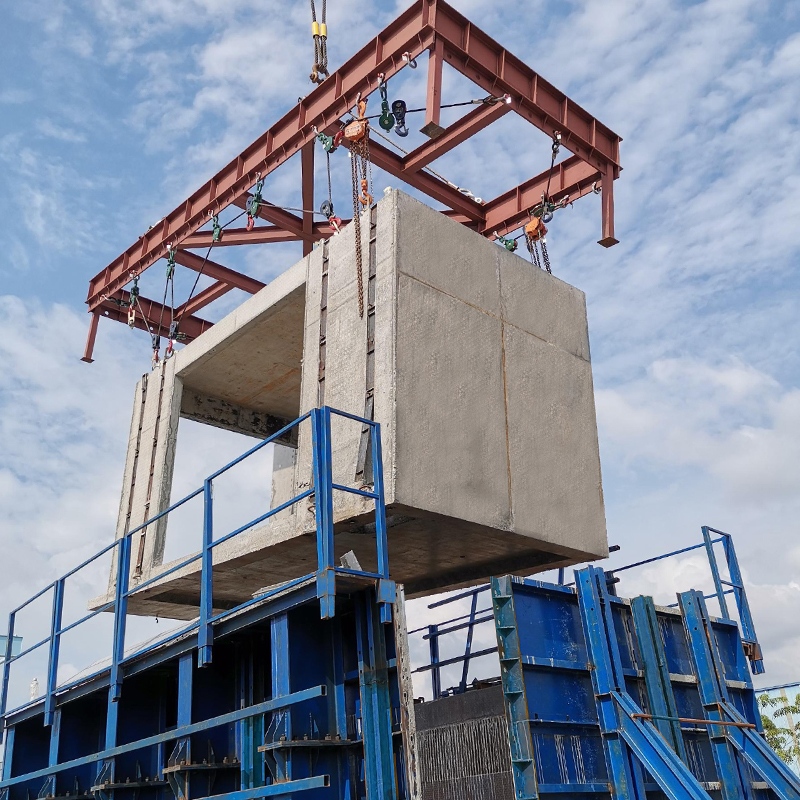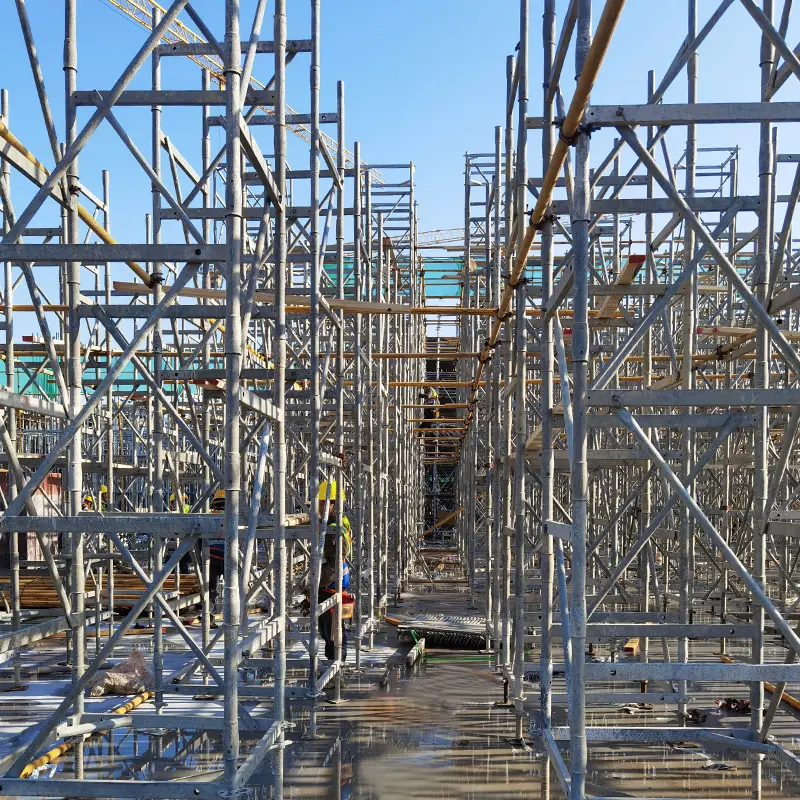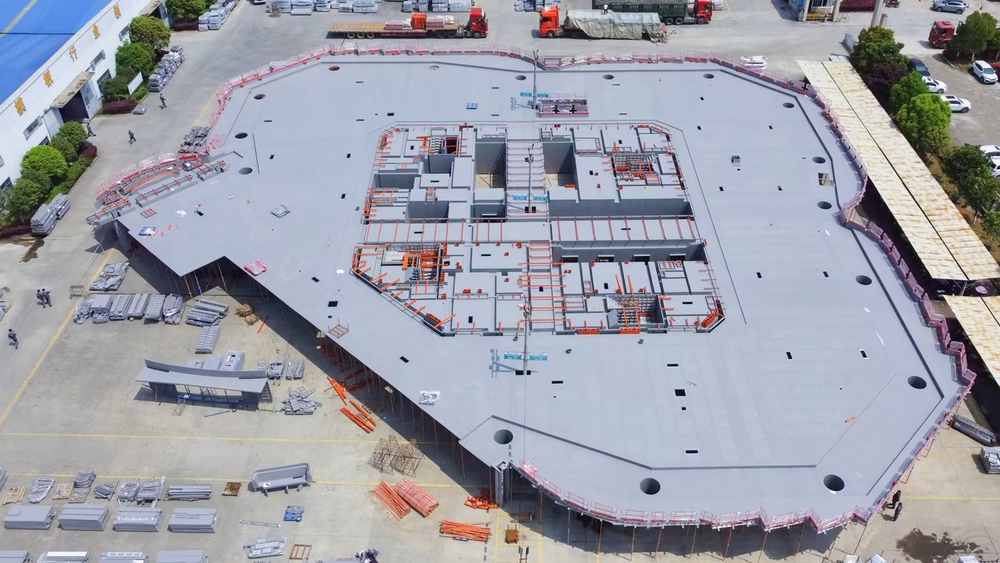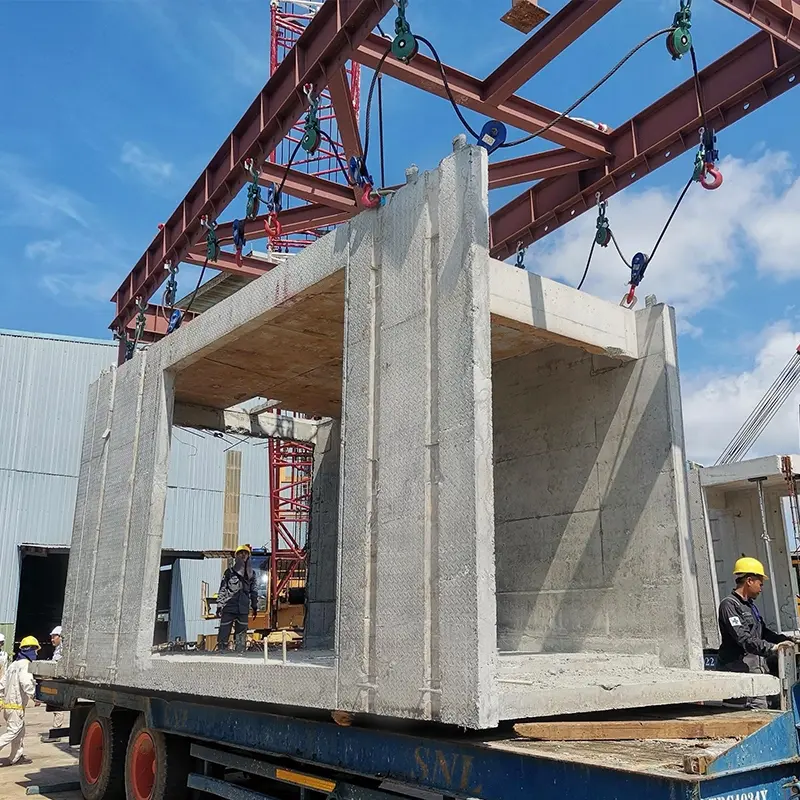Essential Tips for Building Concrete Formwork
Understanding the principles of formwork is not only about following steps but also about appreciating the nuances of concrete behavior. Each project presents its own set of challenges, whether it's ensuring a perfect finish or working around complex shapes. By equipping yourself with the knowledge and tools outlined in this guide, you'll gain the confidence needed to undertake various concrete projects. The key lies in meticulous planning and execution, ensuring that every detail is addressed before moving forward.
Understanding Concrete Formwork
Concrete formwork is a temporary or permanent mold used to hold concrete in place until it hardens and gains enough strength to support itself. The formwork is crucial to ensuring the concrete sets correctly and achieves the desired shape and surface finish. Properly constructed formwork can make a significant difference in the outcome of your project, affecting both its durability and appearance.
The importance of formwork cannot be overstated, as it directly influences the structural integrity and aesthetic quality of the concrete. A well-designed formwork system minimizes waste, reduces labor costs, and enhances safety during the construction process. Moreover, understanding the environmental factors, such as temperature and humidity, that affect the curing process can help in selecting the right formwork materials and design. By taking these factors into account, you can optimize the efficiency and effectiveness of your construction efforts.
Types of Formwork
There are several types of formwork, each suited for different applications and project scales:
- Traditional Timber Formwork: Made from timber or plywood, this is the most common type of formwork used for small-scale projects. It's cost-effective and relatively easy to work with. Timber formwork is highly adaptable, allowing for custom shapes and sizes, which makes it ideal for unique or irregular projects. However, it requires careful handling and maintenance to prevent warping and ensure longevity.
- Steel Formwork: Known for its strength and durability, steel formwork is often used for larger projects or where a high-quality finish is required. Steel formwork offers excellent reusability and can withstand the pressures of multiple pours without losing its shape. Its rigidity ensures uniformity in the concrete finish, making it a preferred choice for projects where aesthetics are paramount.
- Plastic Formwork: Lightweight and reusable, plastic formwork is ideal for repetitive tasks and small projects. It is particularly useful in environments where moisture and corrosion might affect traditional materials. The ease of assembly and disassembly makes plastic formwork a practical option for projects with tight schedules.
- Modular Formwork Systems: These systems are made from prefabricated panels and are often used in commercial construction for their efficiency and adaptability. Modular systems reduce the need for skilled labor and can significantly speed up the construction process. Their versatility allows for quick adjustments, making them suitable for a wide range of project types and sizes.
Essential Tools and Materials
Before diving into your formwork construction, gather the necessary tools and materials. Here's a checklist to get you started:
- Tape measure and level: Essential for ensuring precise measurements and alignment during construction.
- Hammer and nails or screws: Fundamental for assembling the formwork components securely.
- Saw (hand saw or circular saw): Necessary for cutting timber or plywood to the required dimensions.
- Drill and drill bits: Useful for making precise holes and fastening pieces together.
- Carpenter's square: Vital for checking the angles and ensuring the formwork is square.
- Plywood or timber: The primary materials for constructing the diy formwork panels.
- Release agent: Applied to prevent concrete from sticking to the formwork, facilitating easy removal.
- Stakes and string: Used for marking and aligning the formwork to ensure accuracy.
Having the right tools and materials not only makes the process smoother but also helps achieve a professional finish. Investing in quality tools can save time and reduce the likelihood of errors, which can be costly to rectify. Additionally, ensuring that all materials are on-site before beginning construction prevents delays and helps maintain momentum throughout the project.
Concrete Formwork Stairs
Steps to Build Concrete Formwork
Step 1: Plan Your Project
Before you begin construction, take time to plan your project thoroughly. Determine the dimensions and shape of the concrete structure you want to build. Create a detailed sketch or blueprint, noting the measurements and any specific features, such as steps or curves. Consider any potential challenges, such as complex angles or tight spaces, and plan for these in your design.
A well-thought-out plan acts as a roadmap, guiding you through each phase of the project and helping to anticipate potential issues. During the planning stage, it's also essential to consider the construction timeline and allocate resources accordingly. This proactive approach minimizes disruptions and ensures a smoother workflow, ultimately leading to a successful project outcome.
Step 2: Mark the Area
Once you have your plan, mark the area where you'll place the formwork. Use stakes and string to outline the shape and ensure everything is aligned correctly. This step is crucial for maintaining accuracy throughout the project. Double-check measurements to ensure that they align with your blueprint, making adjustments as necessary.
Marking the area is about precision and foresight. It's important to account for any slopes or irregularities in the ground that might affect the alignment. A well-marked area provides a visual guide that helps keep the project on track and ensures that the final structure matches the design specifications.
Step 3: Prepare the Ground
The ground beneath your formwork needs to be stable and level. Clear any debris or vegetation and compact the soil to create a solid base. If necessary, add a layer of sand or gravel for additional stability. This foundation is crucial for preventing the formwork from shifting or settling during the concrete pour.
Preparing the ground is about creating a strong foundation for your formwork and ultimately, your concrete structure. Ensuring that the base is firm and level reduces the risk of cracks and defects in the finished product. This step also involves addressing drainage issues, which can affect the curing process and long-term durability of the concrete.
Step 4: Cut and Assemble the Formwork
Using your measurements, cut the plywood or timber to create the panels for your formwork. Assemble the panels using nails or screws, ensuring all corners are square and joints are secure. Double-check the dimensions against your blueprint to avoid costly mistakes. Precision during this step ensures the integrity and appearance of the final concrete structure.
Assembling the formwork is an exercise in craftsmanship and attention to detail. It's important to ensure that all components fit together seamlessly and are reinforced adequately to withstand the pressure of the concrete. Taking the time to verify measurements and alignment can prevent common issues such as leaks or misalignments, which can compromise the project.
Step 5: Position and Secure the Formwork
Position the assembled formwork in the marked area, ensuring it's level and aligned with your stakes and string. Use additional stakes to secure the formwork in place, driving them into the ground at regular intervals. This will prevent the formwork from shifting when you pour the concrete. Regular checks for alignment and levelness are crucial as you secure the formwork.
Securing the formwork is about ensuring stability and precision. The stakes play a critical role in holding the formwork in place, preventing movement that could lead to defects in the concrete. It's essential to check for any gaps or misalignments, as these could affect the final outcome and require costly repairs or adjustments.
Step 6: Apply a Release Agent
To ensure the formwork can be easily removed once the concrete has set, apply a release agent to the inside surfaces. This will prevent the concrete from sticking and help achieve a smooth finish. The choice of release agent can affect the quality of the surface finish and ease of formwork removal.
Applying a release agent is a vital step in ensuring a clean and efficient removal process. It reduces the risk of damaging the concrete surface when dismantling the formwork. Selecting the appropriate release agent for the specific type of formwork material can further enhance the quality of the finished product and streamline the disassembly process.
Building Concrete Stairs Formwork
For beginners, building formwork for concrete stairs can be a challenging yet rewarding project. Here are some additional tips to help you succeed:
Step 1: Design the Stairs
Plan the dimensions of your stairs, including the number of steps, riser height, and tread depth. Ensure your design complies with local building codes, which often dictate minimum and maximum step dimensions for safety. A well-designed staircase not only meets functional requirements but also enhances the overall aesthetic of the space.
The design phase is crucial for ensuring that the stairs meet both functional and aesthetic requirements. Consider the intended use and traffic flow to determine the optimal dimensions and layout. This step involves balancing practicality with creativity, resulting in a staircase that is both safe and visually appealing.
Step 2: Construct the Stringers
The stringers are the side supports for your stairs. Cut them from sturdy plywood or timber, following your design. The stringers should have notches to support each step, with precise measurements to ensure the stairs are even. Properly constructed stringers are essential for maintaining the structural integrity of the staircase.
Constructing the stringers is a detail-oriented process that requires precision and skill. The notches must be accurately cut to prevent uneven steps or instability. Ensuring that the stringers are robust and correctly aligned is key to creating a staircase that is both functional and durable, capable of withstanding regular use over time.
Step 3: Assemble the Formwork
Assemble the formwork for each step, starting from the bottom and working your way up. Secure the stringers to the sides of the formwork, ensuring everything is level and aligned. This step requires careful attention to detail to avoid misalignments that could affect the final structure.
Assembling the formwork involves a systematic approach to ensure consistency and accuracy. Each component must fit together seamlessly, with secure connections to withstand the pressure of the concrete. Regular checks for levelness and alignment help prevent issues that could compromise the safety and appearance of the finished staircase.
Step 4: Reinforce the Formwork
Concrete stairs require reinforcement to handle the weight and pressure. Use rebar or wire mesh to reinforce the formwork, ensuring it's securely positioned before pouring the concrete. Reinforcement is crucial for the longevity and safety of the stairs.
Reinforcing the formwork is about providing additional strength and stability to the structure. The reinforcement must be carefully placed and secured to ensure it effectively supports the concrete as it cures. This step is essential for preventing cracks and ensuring that the stairs can withstand daily use and environmental stresses.
Pouring and Curing the Concrete
Once your formwork is in place, it's time to pour the concrete. Follow these steps for a successful pour:
Step 1: Mix and Pour the Concrete
Mix the concrete according to the manufacturer's instructions, ensuring it's the right consistency for your project. Pour the concrete into the formwork, starting at one end and working your way to the other. Use a shovel or trowel to spread and compact the concrete evenly. Proper mixing and pouring techniques are crucial for achieving a uniform and durable finish.
Mixing and pouring the concrete is a pivotal stage that requires precision and care. The consistency of the concrete mix affects its workability and strength, so it's essential to follow guidelines closely. Ensuring even distribution and compaction helps prevent air pockets and ensures a solid and reliable structure.
Step 2: Level and Finish the Surface
Use a straightedge or screed board to level the surface of the concrete, moving it back and forth across the formwork. After leveling, use a trowel to smooth the surface and remove any air bubbles. A well-finished surface enhances the appearance and longevity of the concrete structure.
Leveling and finishing the surface is about achieving a professional and aesthetically pleasing result. The techniques used in this step can significantly impact the final appearance, so attention to detail is crucial. A smooth, even surface not only looks better but also resists wear and damage over time.
Step 3: Allow the Concrete to Cure
Concrete needs time to cure and reach its full strength. Keep the surface moist by covering it with a plastic sheet or using a curing compound. Avoid removing the formwork until the concrete has cured sufficiently, usually after 24-48 hours. Proper curing is vital for the durability and performance of the concrete.
Curing the concrete is about allowing it to develop the necessary strength and durability. Protecting the surface from premature drying and environmental factors ensures that the concrete reaches its full potential. This step is essential for preventing cracks and ensuring the long-term success of the project.
Removing the Formwork
Once the concrete has cured, you can safely remove the formwork. Carefully dismantle the panels, taking care not to damage the concrete. If you've used a release agent, this step should be straightforward. Proper removal techniques help preserve the quality of the concrete finish.
Removing the formwork is the final step in the construction process, requiring patience and care. It's important to avoid rushing this step, as premature removal can damage the concrete. By taking the time to dismantle the formwork carefully, you preserve the integrity of the finished structure and prepare it for use or further construction.
Final Thoughts of Building Concrete Formwork
Building concrete formwork is an essential skill for any DIY enthusiast or aspiring builder. By understanding the basics and following these tips, you'll be well-equipped to tackle a variety of concrete projects, from simple slabs to more complex structures like stairs. Remember, careful planning and attention to detail are key to achieving a professional result. Each project is an opportunity to refine your skills and learn new techniques, contributing to your growth as a builder.
As you gain experience, you'll find that the principles of formwork construction apply to a wide range of projects, each presenting unique challenges and learning opportunities. Embrace these challenges as chances to innovate and improve your craftsmanship. With practice and perseverance, you'll develop the expertise to execute even the most ambitious concrete projects with confidence. Happy building!








